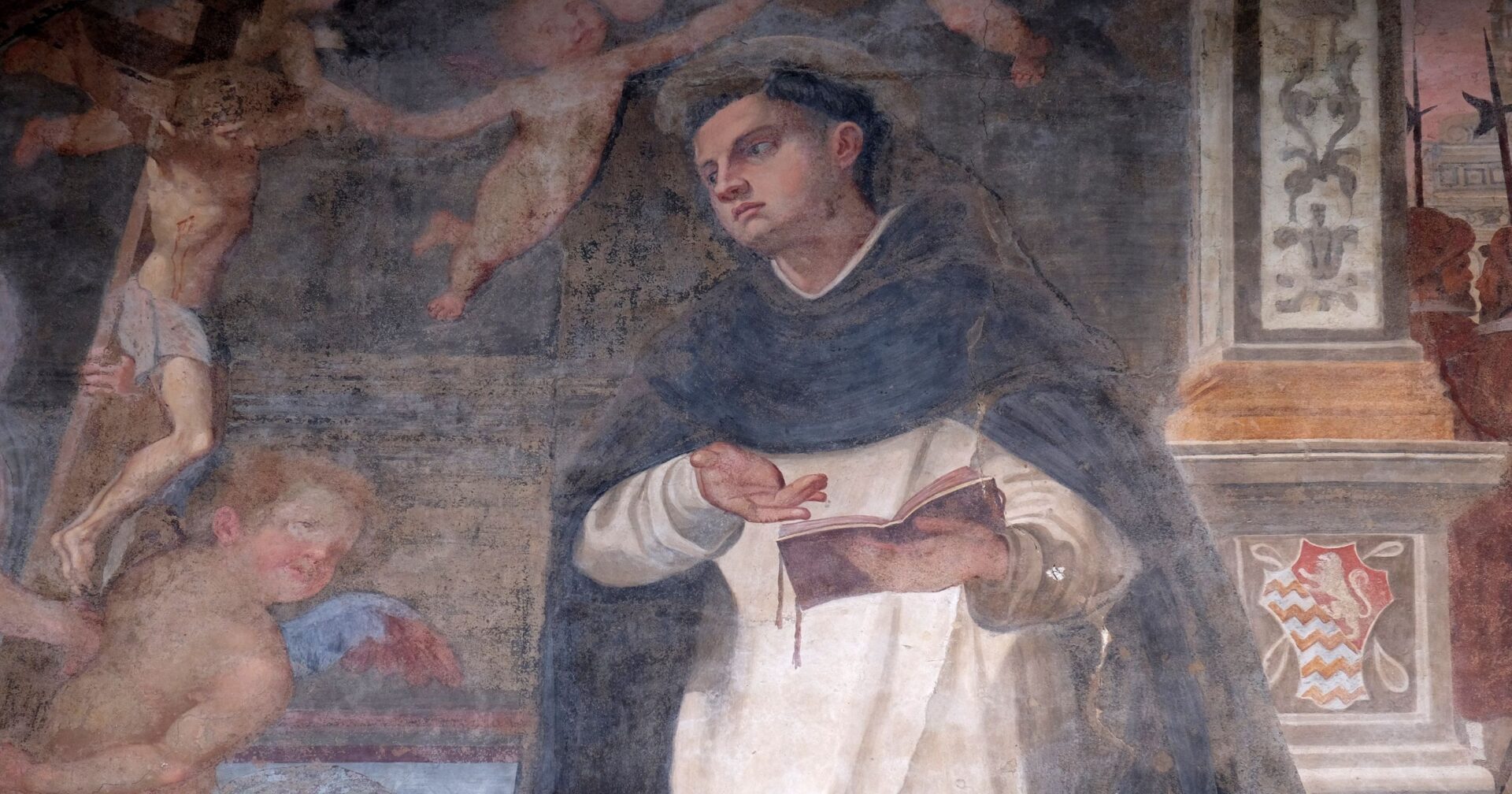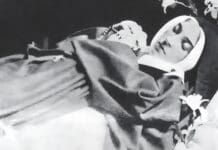Proclaimed ex cathedra by Pope Pius IX in 1854, some argue that Thomas Aquinas rejected the dogma of the Immaculate Conception. Did the Angelic Doctor really have a misconception about the Conception?
It’s popular with detractors of the Angelic Doctor to dismiss his compendium of theological works and any of his teachings that do not suit them on the grounds of “Well, he was wrong on the Immaculate Conception!” But the answer to the question is much more complex than it seems at first glance.
Aquinas’ earliest and most clearest commentary on Mary being free from original sin comes from his Scriptum super Sententiis written 1252 – 1256 in response to Bishop of Paris Peter Lombard’s Sentences.
“Purity is increased by withdrawing from its opposite: hence there can be a creature than whom no more pure is possible in creation, if it be free from all contagion of sin: and such was the purity of the Blessed Virgin who was immune from original and actual sin.“
Years later when Aquinas wrote his Summa Theologica III from 1272-1273, he realized the theological difficulties he was grasping with, affirming that “the Blessed Virgin was sanctified” but also said that “it is not known when she was sanctified.”
Before Blessed John Duns Scotus, theologians like Aquinas in his Summa were trying to reason the linear order in time that Mary was sanctified and preserved from sin. If she was sanctified before ensoulment, then she would not had to have been redeemed and it would trivialize Christ’s Sacrifice. If she was sanctified after ensoulment, then for a brief period the Blessed Mother of our Savior was subject to the influence of the Prince of Darkness. Neither options provided an answer as to how she was free from Original Sin, while also needing to be redeemed.
Scotus then went on to explain a distinction between the order of time – the thinking that Mary’s ensoulment and preservation from Original Sin happened as a linear event i.e one after another, and the order of nature – Mary existing first as a daughter of Adam and thus of sin, and then sanctified as a daughter of God and being free of sin. He said these two natures existed simultaneously at the first moment of existence. In 1661, Pope Alexander VII defined the answer:
“Her soul, from the first instant of its creation and infusion into her body, was preserved immune by a special grace and privilege of God from the stain of original sin, in view of the merits of her Son, Jesus Christ, the Redeemer of our human race.“
Near the end of his life from 1272 to 1273, Aquinas wrote his Compendium Theologiæ where he gives a sense that the Virgin Mary was conceived in and with original sin, but was preserved from it simultaneously at the first point of existence.
“Mary was not only free from actual sin, but she was also, by a special privilege, cleansed from original sin. She had, indeed, to be conceived with original sin. If Mary had been conceived without original sin, she would not have had to be redeemed by Christ, and so Christ would not be the universal redeemer of men, which detracts from His dignity. Accordingly we must hold that she was conceived with original sin, but was cleansed from it in some special way.”
Furthermore, in his Explanation of the Lord’s Prayer, petition 5 Aquinas wrote: “the Blessed Virgin, who was full of grace, in whom there was no sin.” In his Commentary of Psalm 18, he wrote “the Blessed Virgin, who had no darkness of sin.” In his On the Angelic Salutation, he wrote:
“For She Herself avoided every sin, more holy than anyone after Christ. For sin is either original, and from this she was cleansed in the womb; or mortal or venial, and from these She was free. But Christ excelled the Blessed Virgin in this, that He was conceived and born without original sin. Moreover the the Blessed Virgin was conceived in original sin, but not born in it.”
On December 8, 1854 Pope Pius IX then made the infallible proclamation:
“We declare, pronounce, and define that the doctrine which holds that the most Blessed Virgin Mary, in the first instance of her conception, by a singular grace and privilege granted by Almighty God, in view of the merits of Jesus Christ, the Savior of the human race, was preserved free from all stain of original sin, is a doctrine revealed by God and therefore to be believed firmly and constantly by all the faithful.”
Thomas Aquinas did not deny the dogma as defined ex cathedra by Pope Pius IX, but instead affirmed the very principles used to build the dogmatic definition of the Immaculate Conception.
For further reading, read St. Thomas and the Immaculate Conception by Rev. P. Lumbreras, O.P. which explains how Aquinas denied all erroneous explanations of the Immaculate Conception.
Editorial credit: Zvonimir Atletic / Shutterstock.com


















[…] Canada Leads the Way in Liberalizing Euthanasia Around the Globe – C. McGovern at NC Register Thomas Aquinas Believed in the Immaculate Conception. . . Right? – Billy Ryan at uCatholic The Banana Shape: Relax, You Can’t Slip Up! (Catholic Fashion […]